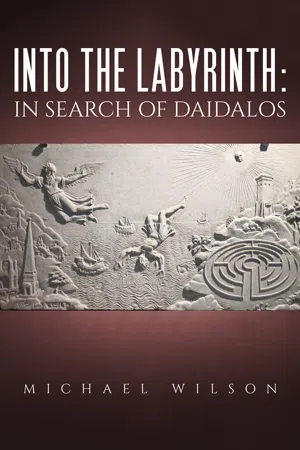Chapter 5
The legacy of Daidalos
Daidalos is deeply embedded in the European consciousness. His name is a powerful “brand”, to use the modern commerce-infatuated vernacular, and is currently associated with a large number of scientific and technological projects as well as being used in an emblematic fashion by many organisations and companies. His life and works have also been an inspiration to painters, sculptors, storytellers, playwrights, poets, opera-writers and film-makers over the centuries. In this chapter, some of the ways in which his name has been perpetuated will be described.
Daidalos as a challenger of the gods
It is important to appreciate just how significant Daidalos was to ancient philosophers and artists. As someone who was capable of making such lifelike statues, Daidalos and his creations were the subject of great debate as to what was “permissible” and “not-permissible”. His ability to imitate life dominates all classical references to his works. For example, in a fragment of Euripides’ play Eurystheus an old man is comforted after, apparently, being frightened by a lifelike statue: “Don’t be afraid old man, its nothing. All the statues of Daidalos appear to move and see, so clever is the man”1.
Daidalos’ art and inventions were at the boundary of what was deemed to be permissible and what was not. His realistic statues, being not quite real but then again not quite inert, may have been acceptable as just being on the right side of that boundary. But, then again, others may have regarded them as being blasphemous. As Pausanias said of Daidalos’ statues “All the works of this artist…… have a touch of the divine in them”2. This is getting dangerously close to a display of hubris i.e. a disregard for the divinely fixed limits on human action in an ordered cosmos.
Figure 5.1. Virgil’s Tomb by Moonlight, with Silius Italicus Declaiming by Joseph Wright (Wright of Derby), 1779 CE. Metropolitan Museum of Art, New York. Virgil’s tomb in Naples has been a popular touristic site for many years. Silius Italicus was a great admirer of Virgil and each year, on the anniversary of the poet’s death, he read aloud some of his verses at the tomb.
Some of his other works – for example, his flight-enabling wings and the artificial cow that facilitated sex between Pasiphae and a bull – would have been judged to have definitely crossed over the boundary into what was not permissible. Euripides expressed this beautifully. In a fragment of his lost play The Cretans, Minos says to Daidalos, with reference to the artificial cow: “You are a builder but what you did was not carpentry”3. That his skills may have offended the gods is suggested by Silius Italicus (a Latin poet and orator of the 1st century CE; Figure 5.1): “He dared to ascend the sky on wings not his own and to reveal to mankind the art of flying. Keeping his body poised amid the clouds, he floated on, and the strange winged creature alarmed the gods”4
Horace, the famous Roman poet (Figure 5.2) also implied that Daidalos had gone too far: “Daring enough for anything, the human race deals in forbidden sin……Daidalos tried the empty air on wings that were never granted to men: Hercules’ labours shattered Acheron. Nothing’s too high for mortal men: like fools, we aim at the heavens themselves”5. This ...

